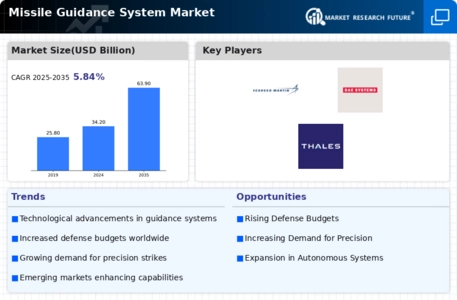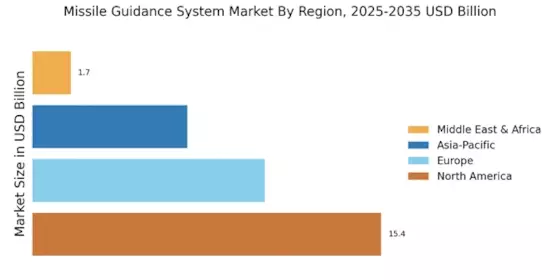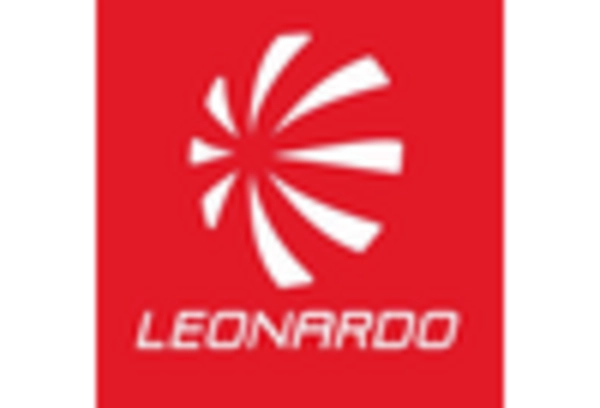Focus on Unmanned Systems
The Missile Guidance System Market is increasingly influenced by the growing focus on unmanned systems, including drones and autonomous vehicles. These platforms require advanced missile guidance systems to enhance their operational effectiveness. The integration of missile guidance technologies into unmanned systems is seen as a critical factor in modern warfare, allowing for precision strikes with minimal risk to personnel. The market for unmanned aerial vehicles (UAVs) is projected to expand significantly, with estimates indicating a growth rate of over 10% annually. This trend underscores the importance of developing sophisticated guidance systems tailored for unmanned applications, thereby driving innovation within the Missile Guidance System Market.
Increased Defense Spending
The Missile Guidance System Market is benefiting from a notable increase in defense spending across various nations. Governments are allocating larger budgets to enhance their military capabilities, particularly in missile technology. This trend is driven by geopolitical tensions and the need for national security. For instance, defense budgets in several countries have seen year-on-year growth, with some nations increasing their expenditures by more than 10% in recent fiscal years. This surge in funding is expected to fuel investments in advanced missile guidance systems, thereby propelling the market forward. As countries strive to maintain strategic advantages, the Missile Guidance System Market is poised for substantial growth.
Emerging Threats and Security Challenges
The Missile Guidance System Market is responding to emerging threats and evolving security challenges faced by nations worldwide. As asymmetric warfare and non-state actors become more prevalent, there is a pressing need for advanced missile systems capable of addressing these complex scenarios. Countries are investing in missile guidance technologies that can adapt to diverse operational environments, enhancing their deterrence capabilities. The market is likely to see increased demand for systems that can counter threats from ballistic missiles and other advanced weaponry. This focus on addressing new security challenges is expected to drive growth within the Missile Guidance System Market, as nations seek to bolster their defense strategies.
International Collaborations and Partnerships
The Missile Guidance System Market is witnessing a rise in international collaborations and partnerships aimed at enhancing missile technology development. Countries are increasingly engaging in joint ventures and cooperative programs to share knowledge, resources, and technological advancements. These collaborations often lead to the development of cutting-edge missile guidance systems that leverage the strengths of multiple nations. For example, partnerships between defense contractors and government agencies can accelerate research and development efforts, resulting in innovative solutions. This trend is likely to foster a more competitive landscape within the Missile Guidance System Market, as nations strive to remain at the forefront of missile technology.
Technological Advancements in Missile Guidance Systems
The Missile Guidance System Market is experiencing rapid technological advancements that enhance the precision and effectiveness of missile systems. Innovations such as GPS, inertial navigation, and advanced sensor technologies are being integrated into guidance systems, improving targeting accuracy and reducing collateral damage. The market is projected to grow significantly, with estimates suggesting a compound annual growth rate of over 5% in the coming years. These advancements not only bolster military capabilities but also attract investments from defense contractors seeking to modernize their arsenals. As nations prioritize the development of next-generation missile systems, the Missile Guidance System Market is likely to witness increased demand for sophisticated guidance technologies.


















Leave a Comment